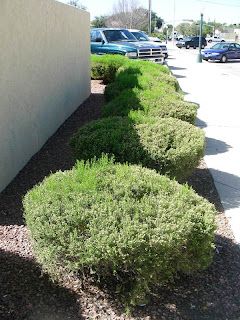If you liked El Rancho De Las Golondrinas,
Part 1, Culture you'll love Part 2, Agriculture:

What's not to love about activities that yield such wonders as these?:

To back up - we headed down into the valley after we left the cultural dwellings:

Telltale signs of damn hard work:

The river valleys here are mainly cottonwood and willow and provide respite for people as well as wildlife:

An
acequia (irrigation canal)- must be something growing around here:

More telltale signs (a plow) of working with the earth to grow food:

Here we are - harvested corn and chile (left) fields:

Gotta have orchards or you can't have apple pie:

Before mass-transit, farming communities had everything they needed, even a grain mill:

An ingenious person came up with this:

Water turns the big wheel which ultimately turns a large stone that grinds grain into flour:

Excess water is diverted into a pond - which is very handy in an arid climate:

Another sort of mill - a sorghum press. It's like an apple press except you get sorghum syrup (a sweetener) instead of apple cider:

Or you can just eat 'em like pixie sticks!:

The local staple: beans...

...squash...

...chile:

...to be cooked for sustenance and enjoyment:

Goats and fiber arts were huge at this time in Northern New Mexico (and still are to some extent even today):

The fiber is combined with dyes and such...

...and processed...

...into colorful to-be-yarn for cloths, rugs, etc.

A weaving loom:

A spinning wheel:

This nicely illustrates the importance of riparian (stream-associated) areas to both agriculture and wildlife (relative to the pinyon-juniper upland in the background, the riparian area has much more moisture, fertility and tree canopy complexity). Not that pinyon-juniper woodlands are not equally important in other contexts - because they are:

I bet these guys are dreaming of simpler times...

...when
agriculture
was culture and gratefulness for food, fiber and folks was foremost:

What goes around comes around, we are predicting....
 Sunny and warm days in the 70's are great for harvesting herbs and hanging them to dry:
Sunny and warm days in the 70's are great for harvesting herbs and hanging them to dry:
 We use very light and shallow cultivation so as not to disrupt the soil food web:
We use very light and shallow cultivation so as not to disrupt the soil food web:




























































